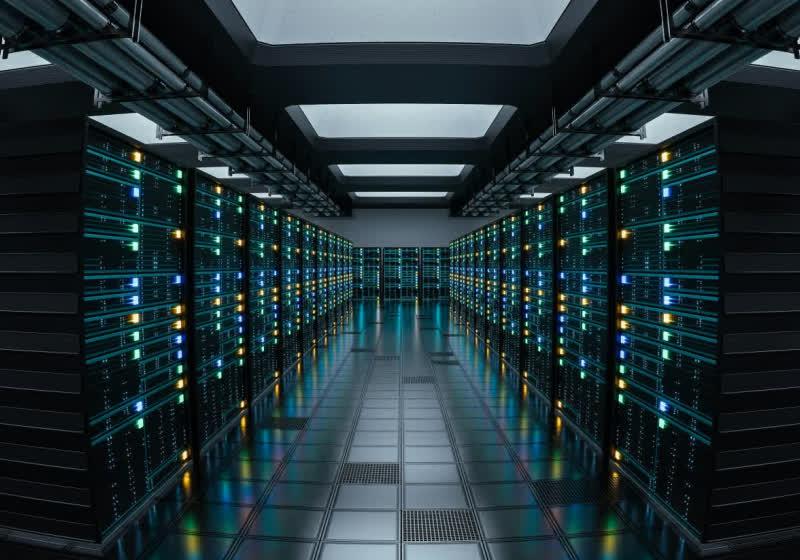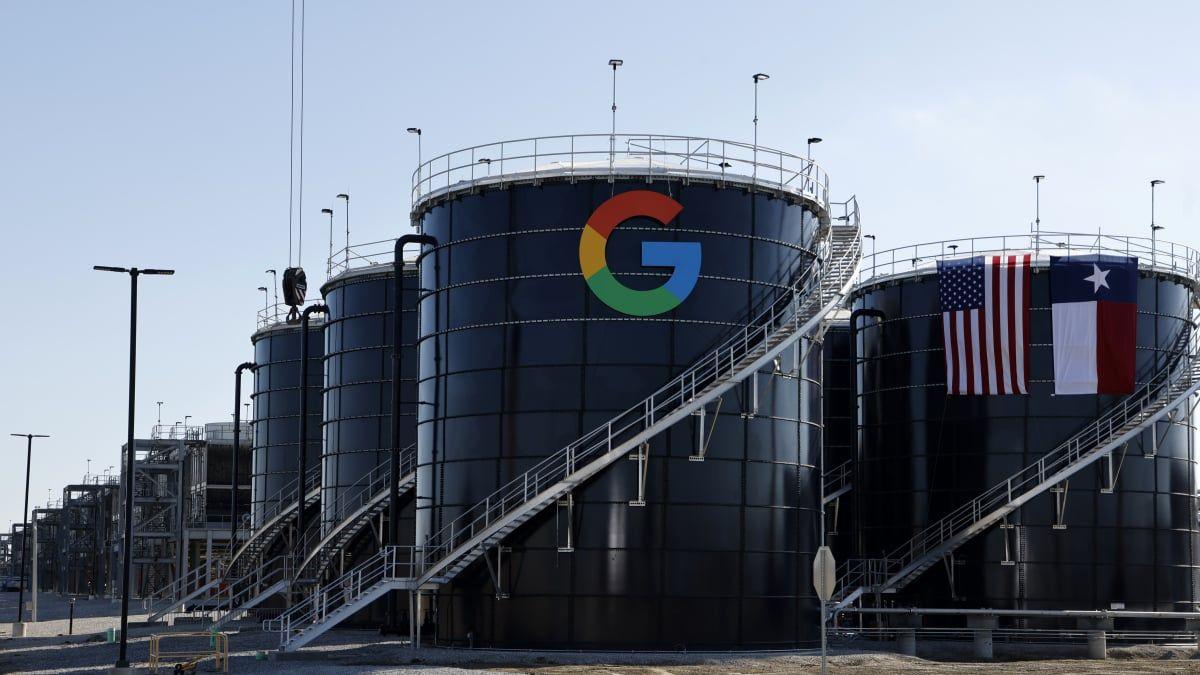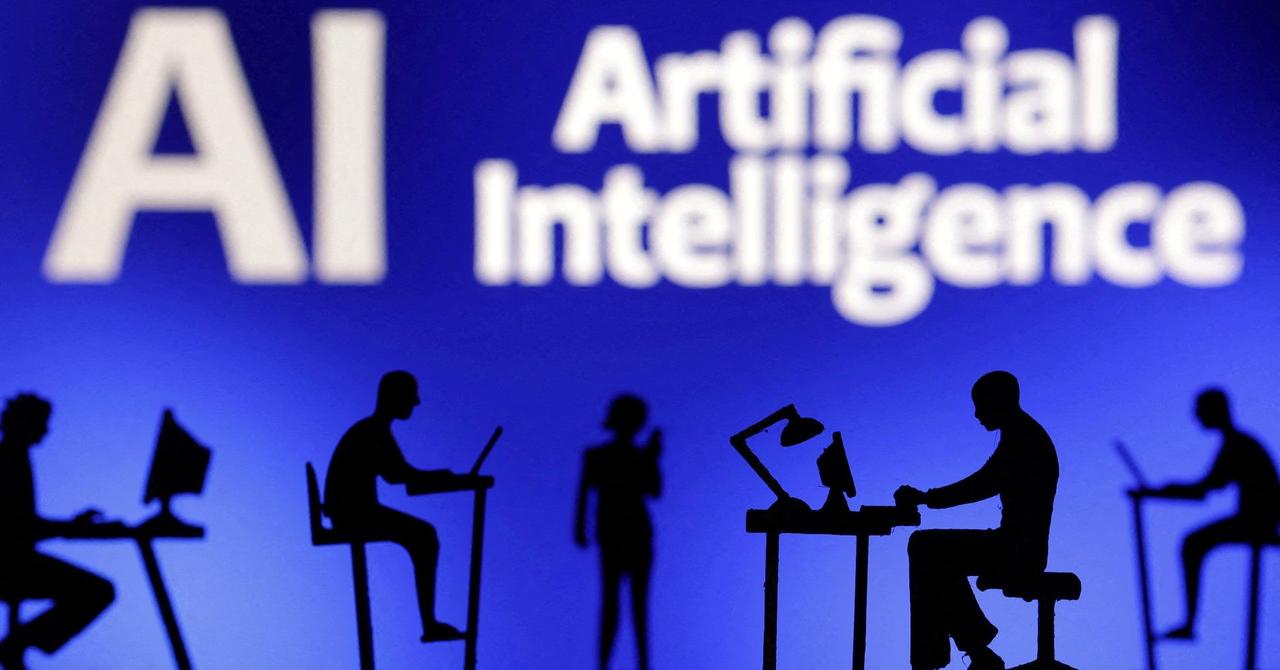AI-Driven Data Center Boom Propels US Economic Growth in 2025
2 Sources
2 Sources
[1]
Nearly all US growth in 2025 tied to AI and data center-related capital spending
Serving tech enthusiasts for over 25 years. TechSpot means tech analysis and advice you can trust. Connecting the dots: US economic growth in 2025 is being driven by an unprecedented surge in AI-related infrastructure spending - an inversion of the forces that have long powered expansion. The boom underscores how deeply artificial intelligence is reshaping the real economy, and it's forcing economists to ask whether America's new growth model is sustainable, or dangerously narrow. Investment in data centers and information processing technology has taken center stage in the growth of the US economy this year, setting new benchmarks and prompting economists to reconsider long-held assumptions about what drives expansion. Recent analysis by Harvard economist Jason Furman found that excluding spending on technology-related infrastructure, annualized GDP growth in the first half of 2025 would have been just 0.1 percent - underscoring the extraordinary influence of digital infrastructure investment on overall economic performance. The findings make clear that surging demand for advanced computing resources has fueled outsized capital spending among America's largest technology firms. According to multiple analysts, the data center boom has become so pronounced that, for the first time, it has surpassed US consumer spending - traditionally two-thirds of GDP - as the leading contributor to growth. Renaissance Macro Research estimated in August that the dollar value added by AI-related data center investment outpaced consumer spending growth through the first half of the year. Furman's research found that while investment in information-processing equipment and software accounted for just four percent of total US GDP during the period, these sectors were responsible for nearly 92 percent of reported GDP growth. He noted that the impact might be somewhat less pronounced if not for elevated interest rates and rising electricity costs. "Absent the AI boom, we would probably have lower interest rates [and] electricity prices, thus some additional growth in other sectors," he said. "In very rough terms, that could maybe make up about half of what we got from the AI boom." Still, Furman characterized the scale of the contribution as "big" - and difficult to ignore. The cascade of spending is evident in the capital allocation strategies of industry leaders such as Microsoft, Google, Amazon, Meta, and Nvidia. These firms have collectively funneled tens of billions of dollars into building, expanding, and upgrading their data center footprints. The buildout includes state-of-the-art servers, custom hardware accelerators for machine learning, next-generation networking fabrics, and advanced energy management systems - all required to scale generative AI workloads and cloud services to meet global enterprise demand. Also see: OpenAI and Nvidia's mega-deals fuel an AI arms race - and fears of a circular bubble Lisa Shallet, chief investment officer for Morgan Stanley Wealth Management, wrote in a research note that so-called "hyperscaler" companies have increased their data center and related capital expenditures fourfold in recent years, with total spending nearing $400 billion annually. Shallet observed that the rapid acceleration in outlays among top technology firms accounts for almost one-third of all industry-wide capital spending, distorting the broader economic landscape and adding roughly 100 basis points to US real GDP growth. "The speed of growth and size of the investment are skewing its aggregate economic impact," she said, pointing to the outsized role of a handful of major spenders. Elsewhere in the economy, growth has been sluggish. Job creation slowed markedly in the first half of the year, while sectors such as manufacturing, real estate, retail, and traditional services contributed little - or even subtracted from - overall GDP. This dynamic has raised concerns among analysts that, without technology investment, the US might have slipped into a technical recession. Even so, Apollo Global Management Chief Economist Torsten Sløk offered a counterpoint in an early October note to clients, writing, "The consensus has been wrong since January. The average economist's forecast has said the US economy would slow down for nine months consecutively. But the reality is that it has simply not happened. We in the economics profession need to look ourselves in the mirror." Sløk's comments underscore the uncertainty surrounding the true drivers of recent growth and the difficulty of modeling an economy increasingly defined by digital infrastructure investment. Meanwhile, questions about the sustainability of this growth persist. Morgan Stanley Chief Economist Michael Gapen pointed to the "mystery" of strong spending data coupled with weak hiring and suggested that corporations have absorbed external cost pressures - such as tariffs and higher labor costs - by compressing profit margins rather than raising prices, a phenomenon not directly tied to the data center boom.
[2]
Harvard economist's dire warning: Without data centers, US GDP grew only 0.1% in H1 2025
US GDP growth 2025: The US economy may not be as strong as it looks, warns Harvard economist Jason Furman. According to his latest analysis, almost all of America's economic growth in the first half of 2025 came from one source, data centers and information processing technology, as per a report. Furman shared his findings in a post on social media platform X (formerly Twitter), revealing that if investment in data centers and related technology were excluded, US GDP growth would have been just 0.1% on an annualized basis, as per a Fortune report. His findings were supported by financial analysts, including Robert Armstrong of the Financial Times' Unhedged, who have noted the sharp rise in data center construction. In August, Renaissance Macro Research estimated that the contribution of AI data center buildouts to GDP growth in 2025 had, for the first time, surpassed US consumer spending, which usually makes up two-thirds of GDP, as per the report. ALSO READ: Who is Jonathan Rinderknecht? Here's all details about the man arrested for starting Palisades fire Furman pointed out that investment in information-processing equipment and software made up only 4% of total US GDP in the first half of 2025 but accounted for 92% of the country's GDP growth during that period, according to Fortune. He said it's unlikely the economy would have completely stalled without this boom, saying that "absent the AI boom we would probably have lower interest rates [and] electricity prices, thus some additional growth in other sectors. In very rough terms that could maybe make up about half of what we got from the AI boom," as quoted by Fortune. Major tech companies, including Microsoft, Google, Amazon, Meta, and Nvidia, have invested tens of billions of dollars to expand and upgrade data centers to meet the growing demand for artificial intelligence and large language models that need vast computing power, according to the report. ALSO READ: These are the major US airports facing delays due to the government shutdown -- avoid at any cost Lisa Shallet, Chief Investment Officer at Morgan Stanley Wealth Management, said that spending among these "hyperscalers" has risen sharply, as per Fortune. She said that, "In recent years, hyperscaler capex on data center and related items has risen fourfold and is nearing $400 billion annually," adding, "The speed of growth and size of the investment are skewing its aggregate economic impact, with the top 10 spenders accounting for nearly a third of all spending ... For perspective, it's estimated that data center-linked spending is adding roughly 100 basis points to U.S. real GDP growth," as quoted by Fortune. The tech-driven expansion comes as other parts of the economy struggle, as per the report. Job creation has slowed, and sectors such as manufacturing, real estate, retail, and services have contributed little or even detracted from total output in early 2025, as per the Fortune report. Despite that, GDP data still shows strong overall growth. Apollo Global Management Chief Economist Torsten Sløk noted in early October that economists have repeatedly expected a slowdown that hasn't happened. Sløk said, "The consensus has been wrong since January," adding that the average of economists' forecasts has said the U.S. economy would slow down for nine months consecutively, "But the reality is that it has simply not happened ... We in the economics profession need to look ourselves in the mirror," as quoted in the Fortune report. What did Jason Furman say about US GDP growth? He warned that almost all US economic growth in the first half of 2025 came from data centers and tech investment, as per the Fortune report. Which companies are driving this data center boom? Major tech firms like Microsoft, Google, Amazon, Meta, and Nvidia are leading the investment surge, as per the Fortune report.
Share
Share
Copy Link
Harvard economist Jason Furman's analysis reveals that AI and data center-related spending accounted for nearly all US GDP growth in early 2025, raising questions about the sustainability and narrowness of this tech-driven expansion.

AI and Data Centers: The New Engines of US Economic Growth
In a surprising turn of events, the United States' economic growth in 2025 is being primarily driven by an unprecedented surge in artificial intelligence (AI) and data center-related capital spending. This shift has caught the attention of economists and analysts, who are now reassessing traditional models of economic expansion and questioning the sustainability of this tech-centric growth.
The AI Boom's Outsized Impact
Harvard economist Jason Furman's recent analysis has revealed a startling statistic: excluding spending on technology-related infrastructure, annualized GDP growth in the first half of 2025 would have been a mere 0.1 percent
1
. This finding underscores the extraordinary influence of digital infrastructure investment on overall economic performance.Furman's research indicates that while investment in information-processing equipment and software accounted for just 4% of total US GDP during this period, these sectors were responsible for nearly 92% of reported GDP growth
2
. This disproportionate contribution has led to a reevaluation of what truly drives economic expansion in the modern era.Tech Giants Lead the Charge
The surge in data center investments is being spearheaded by major technology companies such as Microsoft, Google, Amazon, Meta, and Nvidia. These firms have collectively invested tens of billions of dollars into building, expanding, and upgrading their data center infrastructure .
Lisa Shallet, Chief Investment Officer at Morgan Stanley Wealth Management, notes that these 'hyperscaler' companies have increased their data center and related capital expenditures fourfold in recent years, with total spending approaching $400 billion annually
1
2
.A New Economic Paradigm
For the first time in US economic history, data center investment has surpassed consumer spending as the leading contributor to growth. Renaissance Macro Research estimated in August that the dollar value added by AI-related data center investment outpaced consumer spending growth through the first half of the year
1
.This shift represents a significant departure from traditional economic models, where consumer spending typically accounts for about two-thirds of GDP. The rapid acceleration in outlays among top technology firms now accounts for almost one-third of all industry-wide capital spending, adding approximately 100 basis points to US real GDP growth
1
.Related Stories
Concerns and Uncertainties
While the tech sector booms, other areas of the economy have shown sluggish growth. Job creation has slowed markedly, and sectors such as manufacturing, real estate, retail, and traditional services have contributed little or even subtracted from overall GDP
1
.This imbalance has raised concerns about the sustainability and narrowness of the current growth model. Some analysts worry that without technology investment, the US might have slipped into a technical recession
1
.The Path Forward
As the US economy continues to evolve, economists and policymakers face the challenge of understanding and managing this new paradigm of growth. The sustainability of AI-driven expansion and its implications for long-term economic health remain open questions, demanding continued analysis and potentially new approaches to economic policy and planning.
References
Summarized by
Navi
Related Stories
Data center deals hit $61 billion record as AI boom fuels infrastructure spending frenzy
19 Dec 2025•Business and Economy

US Data Center Construction Hits Record $40 Billion as AI Demand Surges
10 Sept 2025•Business and Economy

AMD CEO Lisa Su dismisses AI bubble fears as Goldman Sachs warns of datacenter investment risks
05 Dec 2025•Business and Economy

Recent Highlights
1
Google launches Gemini 3 Flash as default AI model, delivering speed with Pro-grade reasoning
Technology

2
OpenAI launches GPT Image 1.5 as AI image generator war with Google intensifies
Technology

3
OpenAI launches ChatGPT app store, opening doors for third-party developers to build AI-powered apps
Technology





